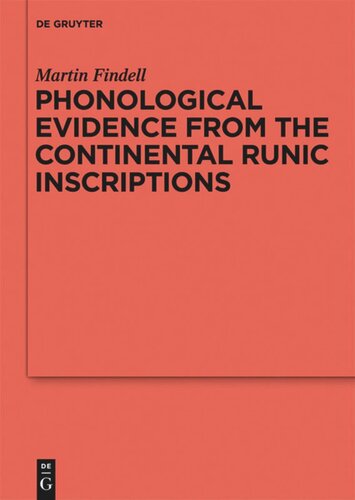

Most ebook files are in PDF format, so you can easily read them using various software such as Foxit Reader or directly on the Google Chrome browser.
Some ebook files are released by publishers in other formats such as .awz, .mobi, .epub, .fb2, etc. You may need to install specific software to read these formats on mobile/PC, such as Calibre.
Please read the tutorial at this link: https://ebookbell.com/faq
We offer FREE conversion to the popular formats you request; however, this may take some time. Therefore, right after payment, please email us, and we will try to provide the service as quickly as possible.
For some exceptional file formats or broken links (if any), please refrain from opening any disputes. Instead, email us first, and we will try to assist within a maximum of 6 hours.
EbookBell Team

4.1
80 reviews The linguistic analysis of runic inscriptions on the Continent tends to focus on individual texts or on groups of texts seen as parallel. We can advance our understanding of the state of Continental Germanic dialects in the 5th-7th centuries by examining the evidence for the major sound changes in a larger dataset.
The study begins with a brief discussion of the Proto-Germanic phonemic system and the major processes by which the systems of Old High German (OHG) and Old Saxon (OS) develop from it. The main body of the work consists of the analysis of a corpus of 90 inscriptions (including, but not confined to, those conventionally labeled "South Germanic") for evidence of these changes. Rather than making the individual inscription the focus for analysis, the investigation groups together all possible witnesses to a particular phonological process.
In many respects, the data are found to be consistent with the anticipated developments of OHG and OS; but we encounter some problems which the existing models of the sound changes cannot account for. There is also some evidence for processes at work in the dialects of the inscriptions which are not attested in OHG or OS.